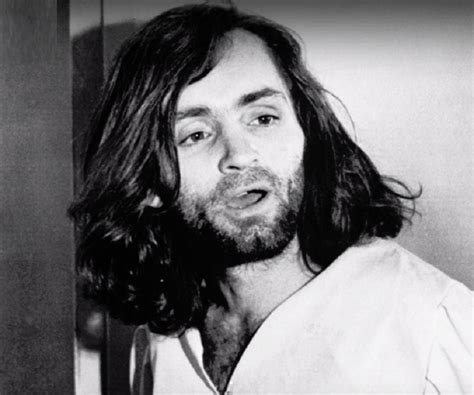The complexities of the human psyche have long fascinated and horrified us, particularly when it comes to individuals who have committed heinous crimes. One such figure is Charles Manson, a name that has become synonymous with evil and brutality. Born on November 12, 1934, in Cincinnati, Ohio, Manson’s life was marked by turmoil, neglect, and a desperate quest for attention and control.
Growing up, Manson faced numerous challenges that would eventually shape his worldview and inform his actions. His mother, Kathleen Maddox, was just 16 years old when she gave birth to him, and his father, Colonel Scott, was never a part of his life. This lack of paternal guidance and stability would have a profound impact on Manson’s development, as he struggled to find his place in the world. He was often shuffled between different homes and institutions, including foster care and juvenile reformatories, which only served to further destabilize his young life.
As Manson entered adulthood, his behavior became increasingly erratic and violent. He was arrested numerous times for various crimes, including burglary, theft, and pimping, and spent several years in prison. It was during one of these stints behind bars that Manson became fascinated with the concept of mind control and the power of manipulation. He devoured books on the subject, including those by Dale Carnegie and Napoleon Hill, and began to develop his own twisted philosophy.
Upon his release from prison in 1967, Manson set his sights on California, where he hoped to become a musician and attract a devoted following. He settled in San Francisco’s Haight-Ashbury neighborhood, a hub for counterculture activity, and began to gather a group of vulnerable and impressionable young people around him. These individuals, many of whom were runaways or disenfranchised from their families, were drawn to Manson’s charismatic personality and his promise of a utopian commune, where they could live free from the constraints of mainstream society.
Manson’s ideology was a bizarre amalgam of hippie ideals, Scientism, and racist paranoia. He believed that a racial war was imminent, which he referred to as “Helter Skelter,” and that his followers would need to prepare themselves for the coming apocalypse. To achieve this, he subjected his devotees to a regime of physical and psychological abuse, including sleep deprivation, sensory overload, and forced labor. He also encouraged them to engage in free love and to abandon their inhibitions, which he claimed would help to break down their individual egos and create a sense of collective unity.
The Manson Family, as his followers came to be known, was a tightly controlled and highly disciplined group. Members were expected to surrender their personal belongings, cut ties with their families, and devote themselves entirely to Manson’s cause. In return, they were promised a sense of belonging, protection, and transcendence. However, this twisted sense of community was built on a foundation of fear, coercion, and manipulation, as Manson used various tactics to keep his followers in line, including emotional blackmail, physical violence, and even murder.
The brutal slaughter of nine people, including the pregnant actress Sharon Tate, in August 1969, would ultimately seal Manson’s fate. The murders, which were carried out by a group of his most devoted followers, including Susan Atkins, Patricia Krenwinkel, and Charles “Tex” Watson, were designed to resemble the work of the Black Panthers, in the hopes of sparking a racial war. However, the plan backfired, and the police were soon able to link the crimes to the Manson Family.
Manson’s trial was a sensationalized media event, with many regarding him as the embodiment of evil. His behavior in court was erratic and disturbing, as he often disrupted proceedings and claimed to be the victim of a conspiracy. In the end, he was convicted of first-degree murder and sentenced to death, a sentence that was later commuted to life in prison when California abolished the death penalty in 1972.
In the years that followed, Manson became a kind of twisted celebrity, with many people fascinated by his charisma and his unrepentant attitude. He granted numerous interviews, including a infamous conversation with Tom Snyder in 1971, and even released an album of his music, “Lie: The Love & Terror Cult,” in 1970. However, despite his notoriety, Manson’s life in prison was marked by isolation and loneliness, as he was often kept in solitary confinement for his own protection.
In 2017, Charles Manson died in prison at the age of 83, due to complications from cardiac arrest and respiratory failure. His legacy is one of darkness and destruction, a reminder of the devastating consequences of unchecked ego, charisma, and ideological fervor. As we reflect on his life and crimes, we are forced to confront the complexity of human nature, with all its contradictions and paradoxes. We are also reminded of the dangers of groupthink, manipulation, and the blind pursuit of power, as well as the importance of empathy, critical thinking, and individual autonomy.
What was the main motivation behind Charles Manson's crimes?
+Manson's motivations were complex and multifaceted, but they ultimately centered around his desire for power, control, and attention. He believed that by committing atrocities, he could spark a racial war and create a sense of chaos, which would allow him to rise to power and create a new social order.
How did Charles Manson recruit his followers?
+Manson recruited his followers by preying on vulnerable and impressionable young people, often runaways or those who were disillusioned with mainstream society. He promised them a sense of belonging, protection, and transcendence, and used various tactics, including charisma, manipulation, and coercion, to keep them under his control.
What was the significance of the Tate-LaBianca murders?
+The Tate-LaBianca murders, which took place in August 1969, were a series of brutal killings carried out by members of the Manson Family. The murders were designed to resemble the work of the Black Panthers, in the hopes of sparking a racial war. However, the plan backfired, and the police were soon able to link the crimes to the Manson Family, ultimately leading to Manson's downfall.
In conclusion, the story of Charles Manson serves as a cautionary tale about the dangers of unchecked power, charisma, and ideological fervor. It highlights the importance of empathy, critical thinking, and individual autonomy, and reminds us of the devastating consequences of groupthink, manipulation, and the blind pursuit of power. As we reflect on Manson’s life and crimes, we are forced to confront the complexity of human nature, with all its contradictions and paradoxes, and to consider the ways in which we can work to prevent similar tragedies from occurring in the future.



